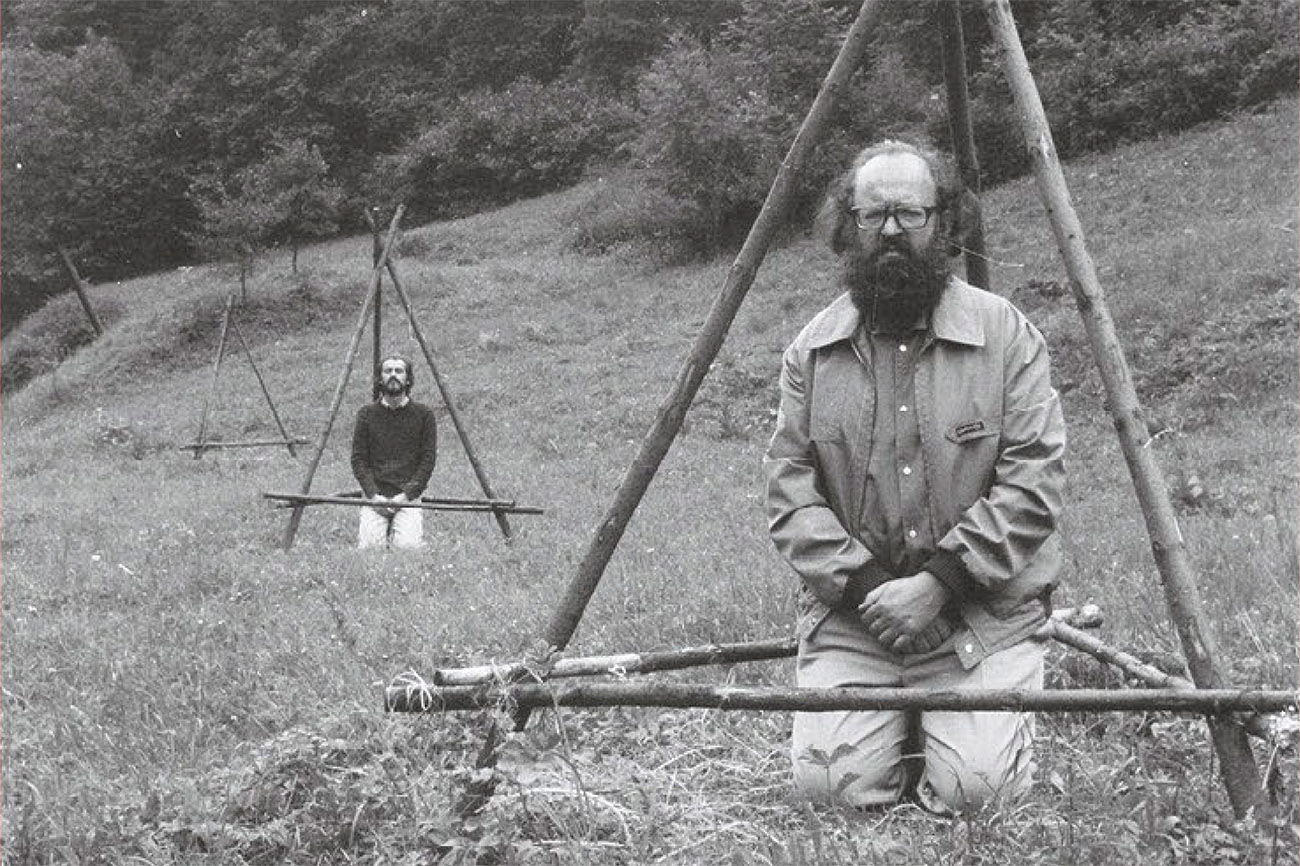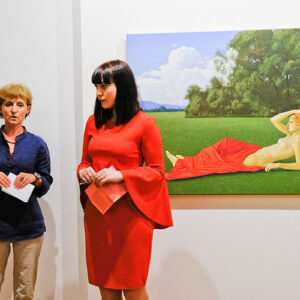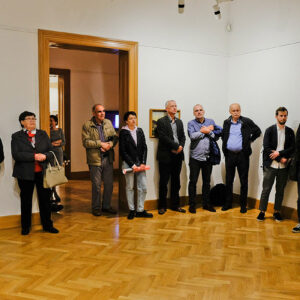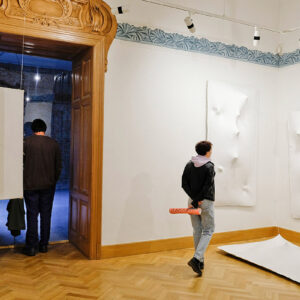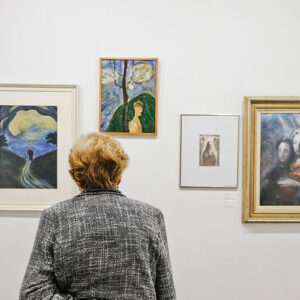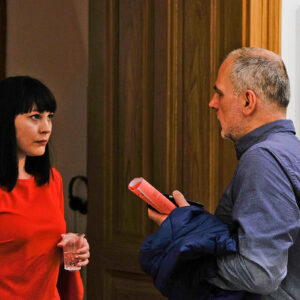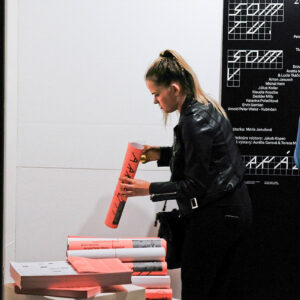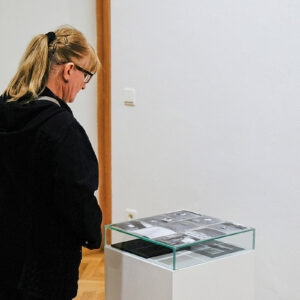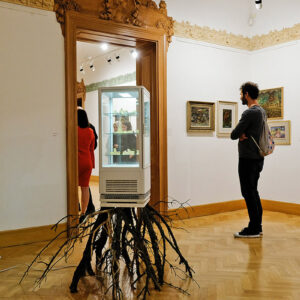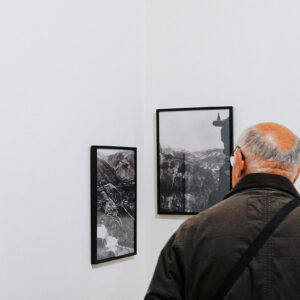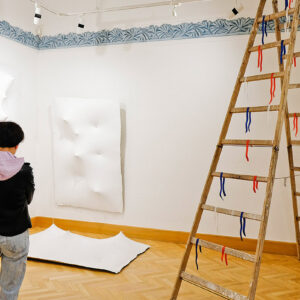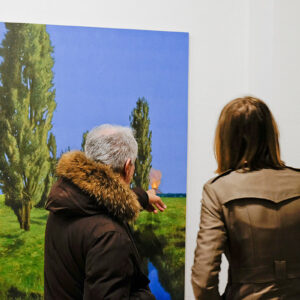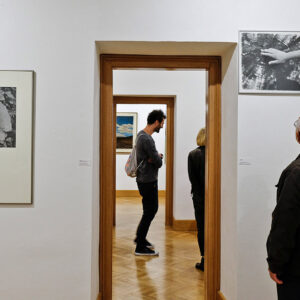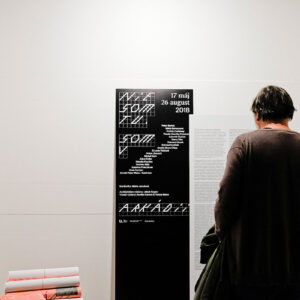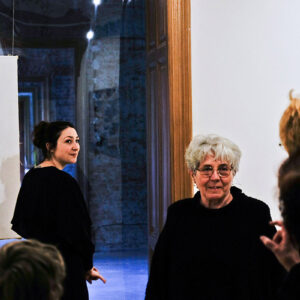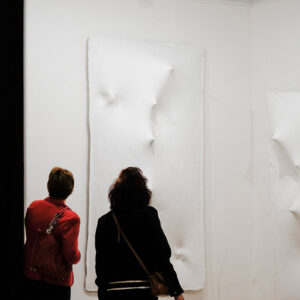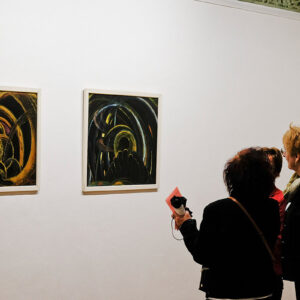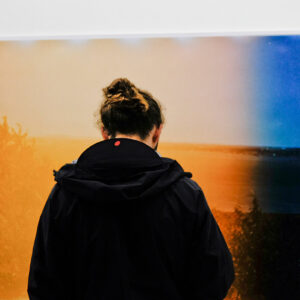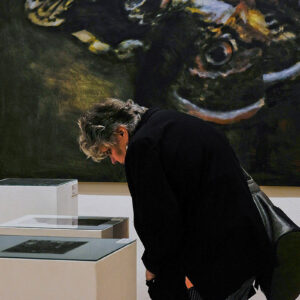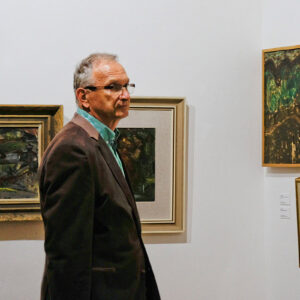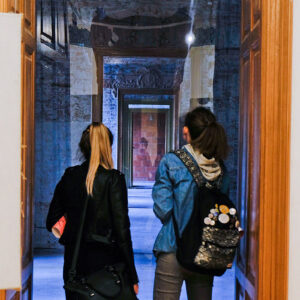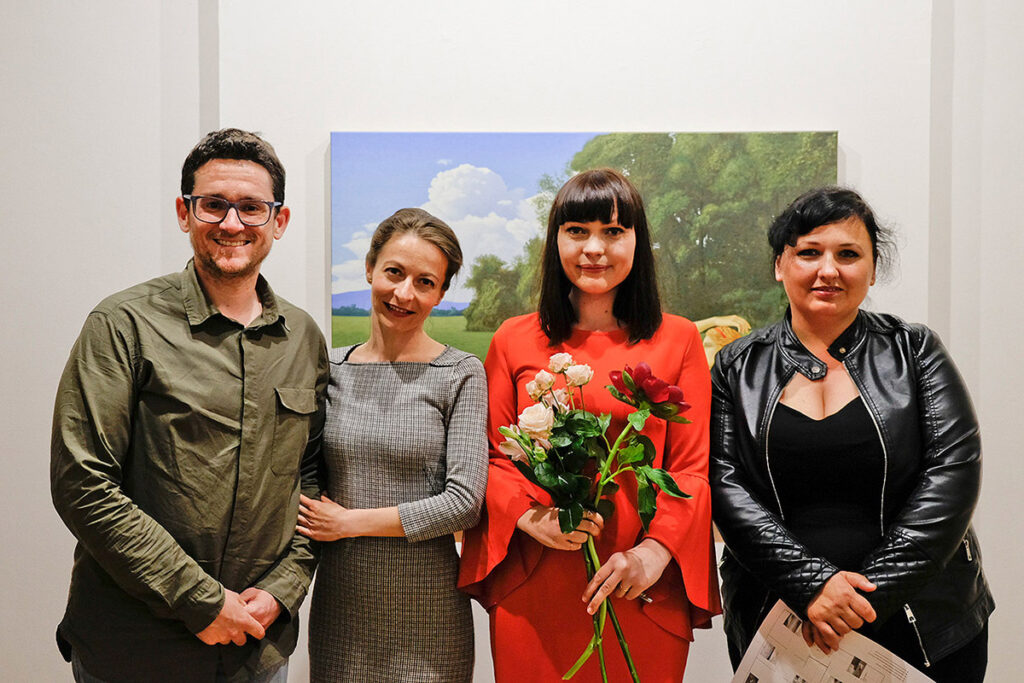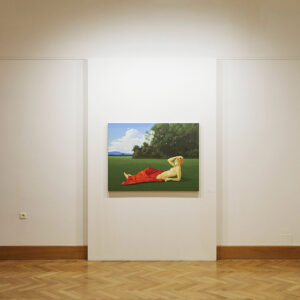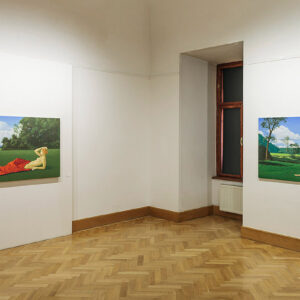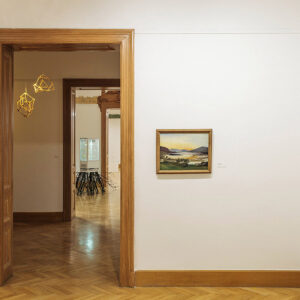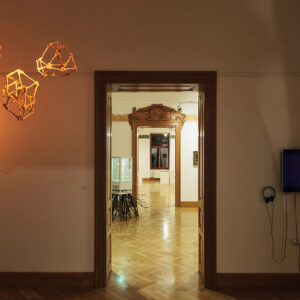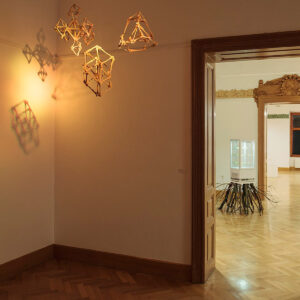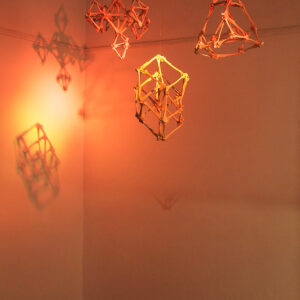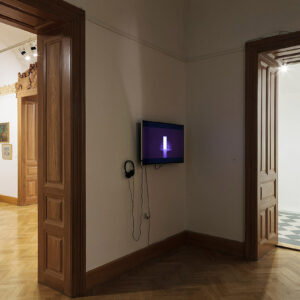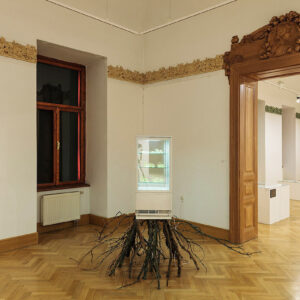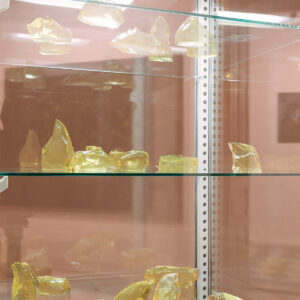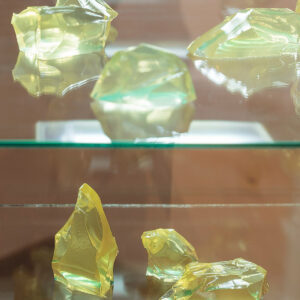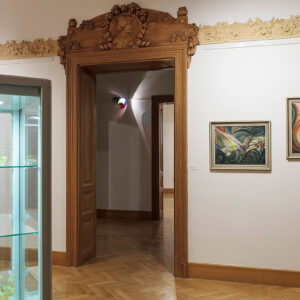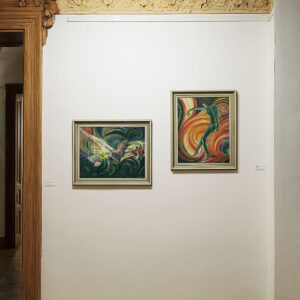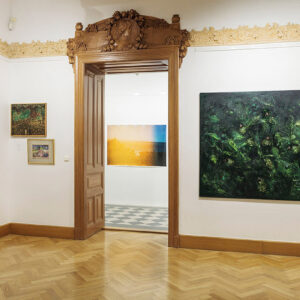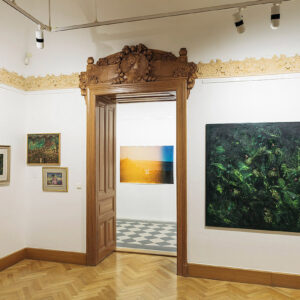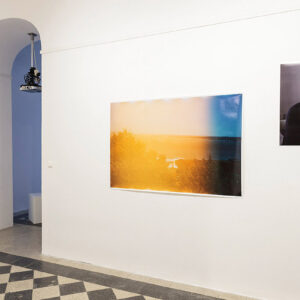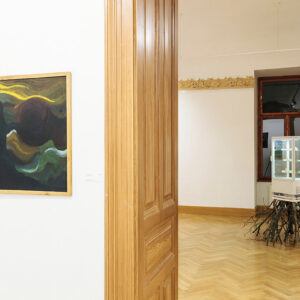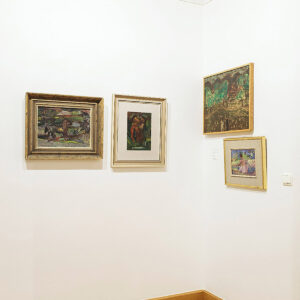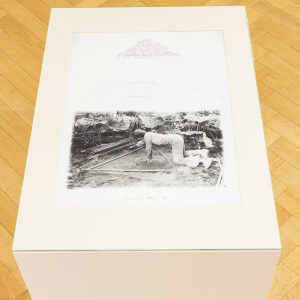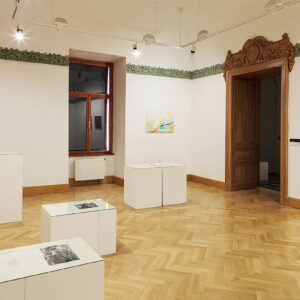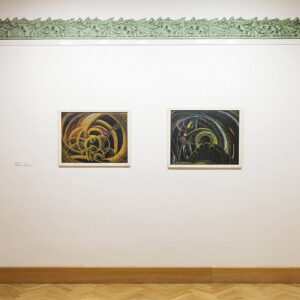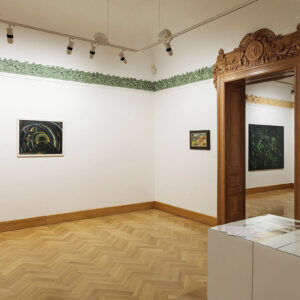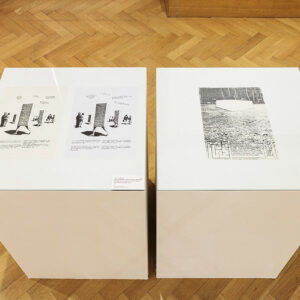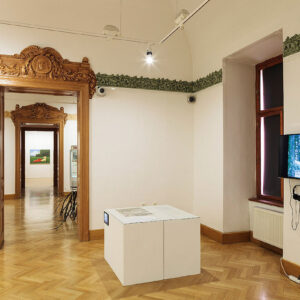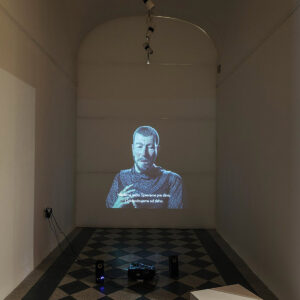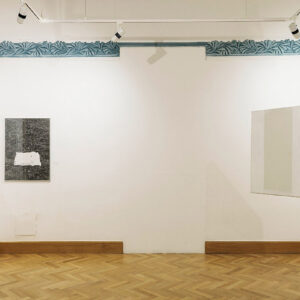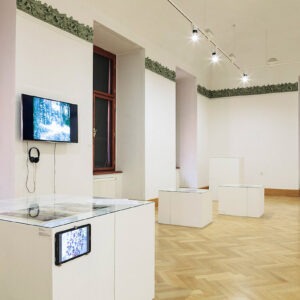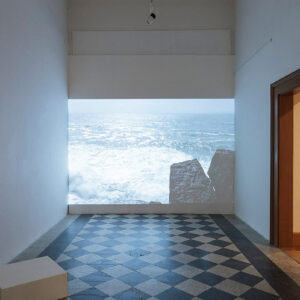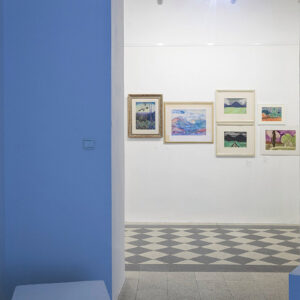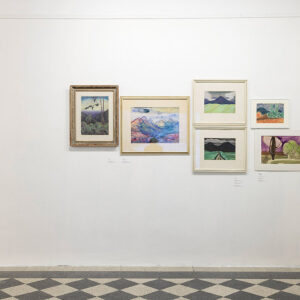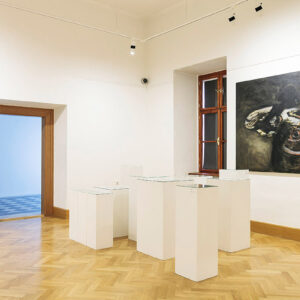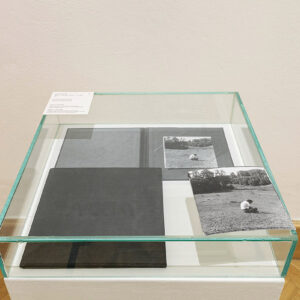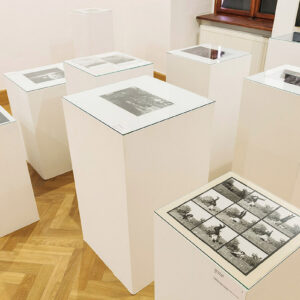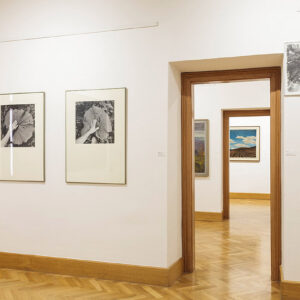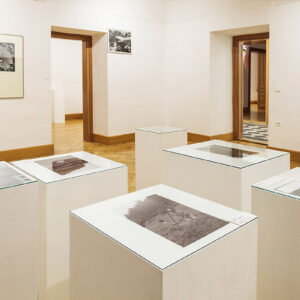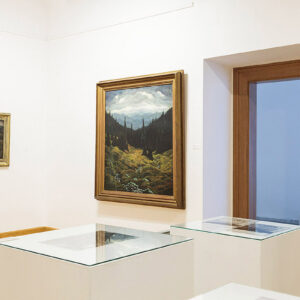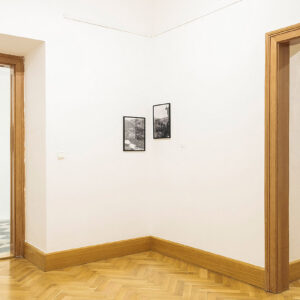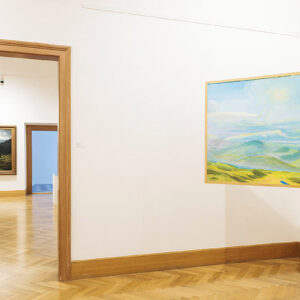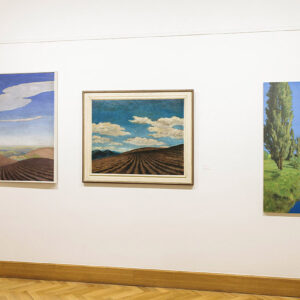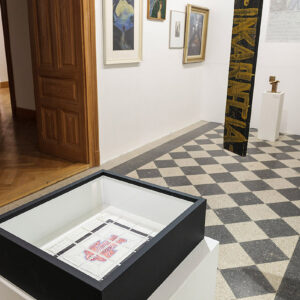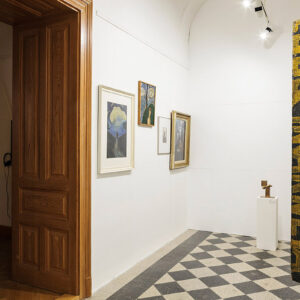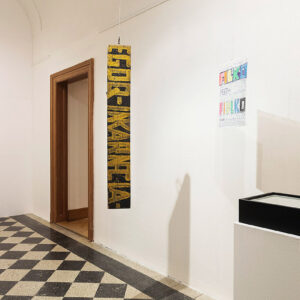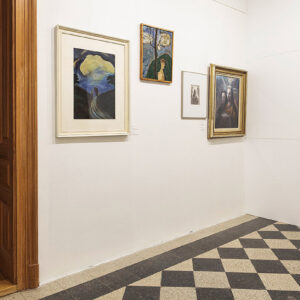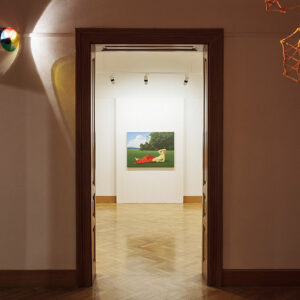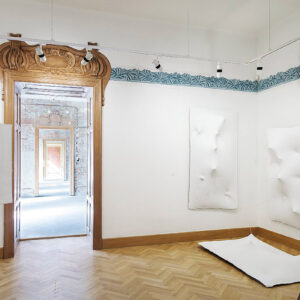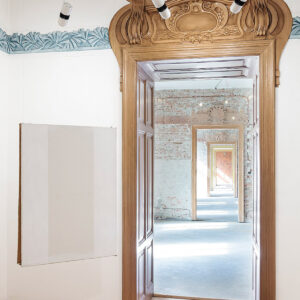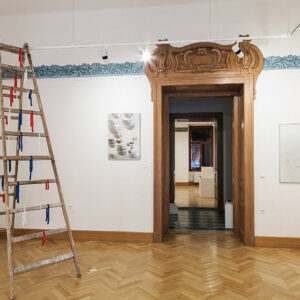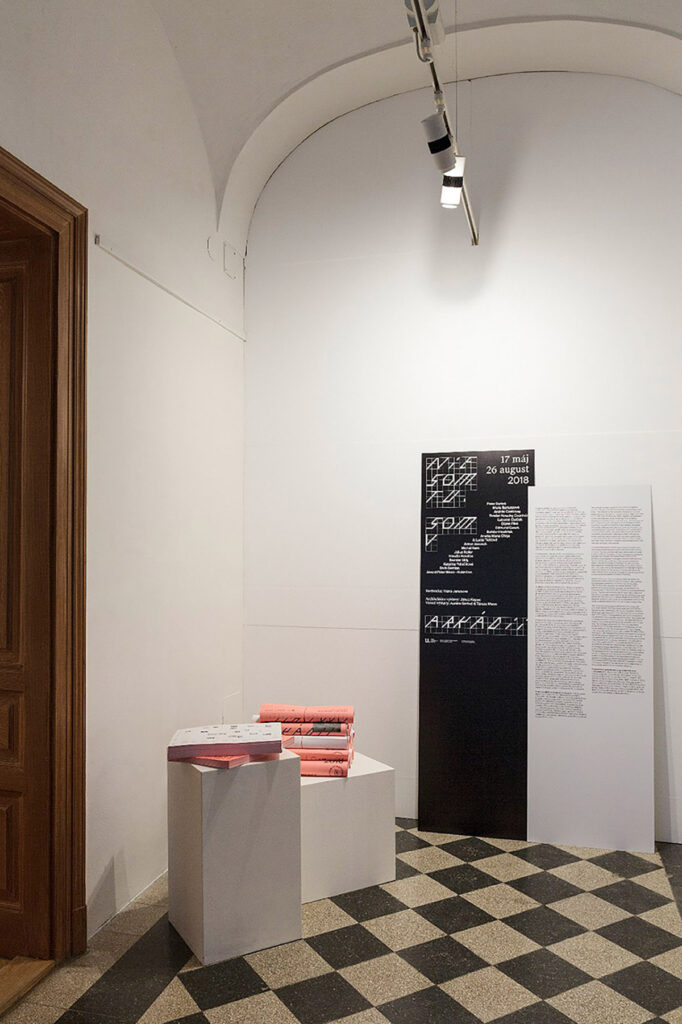Information
Exhibiting artists
Peter Bartoš, Maria Bartuszová, András Cséfalvay, Tivadar K. Csontváry, Ľubomír Ďurček, Stano Filko, Edmund Gwerk, Bohdan Hostiňák, Anetta Mona Chişa & Lucia Tkáčová, Anton Jasusch, Michal Kern, Július Koller, Klaudia Kosziba, Dezider Milly, Katarína Poliačiková, Ervín Semian, Arnold Peter Weisz – Kubínčan
Curator
Mária Janušová
Opening
Thursday, 17 May 2018, 6pm
Duration
until August 26, 2018
Exhibition architect
Jakub Kopec
Visual identity
Aurélia Garová & Tereza Maco
Venue
Representative Halls
Download
Funding
With financial support of the Slovak Arts Council public funds. The Council is the leading partner of the project.
The exhibition project presents internal and imaginary worlds in Slovak visual art from the early 20th century until today. The concept of the exhibition is based on a broad interpretation of two terms – “utopia” as an image of an ideal world order and “arcadia”, an idyllic, pastoral, unreachable country described in Greek mythology. The exhibition focuses on selected artists of modernism, neo-avant-garde and contemporary art that were born in Slovakia or were / have been long-term members of the national art scene. The project explores their personal creative programs that have developed / have been developing into a poetisation of the world and reality. The work of the presented artists have often represented a response to their time period, society, political regime, personal traumatic experiences or dystopian future. Art has enabled them to bend reality to their own liking, recreate it completely or escape from it into their own personal, inner worlds.
The presented works contain very subjective statements with characteristic features such as detachment, humour, irony, but they also evoke loneliness, melancholy or overall anxiety rooted in the reality of their time period or personal dramas. Even though the predominant theme of the exhibition is landscape, its purpose is not to demonstrate the visual features or beauty of the natural scenery, but rather a deeper message embedded into the artworks, their concepts or strategic philosophy of the artist. One of the main objectives of the exhibition is to highlight original creative programs in Slovak art of the second half of the 20th century and emphasise the need for authenticity in the contemporary art world as it lacks it severely.
Jakub Kopec’s architectural adjustments disrupted the centre line of the exhibition area that used to be a hallway connecting the exhibition rooms located by its sides. The dividing walls raised in the central hallway cost it both its dominance and its purpose, but expanded the Representative Halls of the Nitra Gallery by adding additional rooms. The new architectural layout resembles a labyrinth – the visitor is forced to keep exploring the exhibition area and search for new ways out or deeper inside the exhibition. The labyrinth symbol is also a part of the exhibition concept that refers to ancient philosophy and mythology in many ways.
The presented artworks are not sorted chronologically or by their authors, but they are divided into five themes: Wandering the Landscape, Harmony of Cosmos, Personal Mythology and Visionaries, From Reality Back to the Dream and From Utopia to Transcendency. As the architecture of the exhibition area uses the labyrinth motive – the viewer has to wander between individual rooms – we have decided to support this notion by arranging the artworks in an unusual way. The individual categories and the corresponding artworks are not located centrally in a single area, but are rather spread across the whole exposition. Each theme uses a specific symbol that is used to mark the artwork that belongs to it. By following the symbol, the viewer can explore the whole area and create their own theme tour. Many of the artworks are a part of more than one theme group which interconnects and combines their paths. This element is also used to point out that the presented pieces cannot be perfectly defined nor “pigeonholed” as they do not rely on a single universal interpretation. In the end, one of the goals of the exhibition is to offer a new and different view on the generally well-known works that are a part of the Slovak visual art history as well the works of our most influential artists of the 20th century. The transhistorical relations between the selected visual expressions created from the 20th century until today are supposed to portray a certain continuity in Slovak art as well as present a wide range of approaches within the same theme category.
An exhibition guide will be available at the exhibition opening. It will include the curatorial text in Slovak and English and a map of the exhibition area featuring reproductions of selected artworks, highlighted thematic areas and exhibition tours. An accompanying exhibition catalogue will be available in both Slovak and English soon.
The exhibited artworks are a part of the following collections: Bratislava City Gallery, East Slovakian Gallery in Košice, First Slovak Investment Group Inc., Gallery of Miloš Alexander Bazovský in Trenčín, Jiri Svestka Gallery, Linea Collection, Liptov Gallery of Peter Michal Bohúň in Liptovský Mikuláš, Museum of art in Prešov, Museum of Art in Žilina, Nitra Gallery, Novohrad Museum and Gallery in Lučenec, Orava Gallery in Dolný Kubín, White & Weiss Contemporary Art Gallery and the presented artists. We thank all of the institutions, private collections, galleries and artists for loaning us their artworks.
